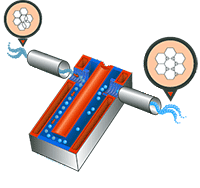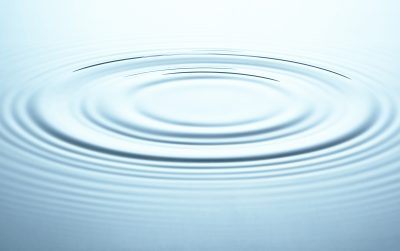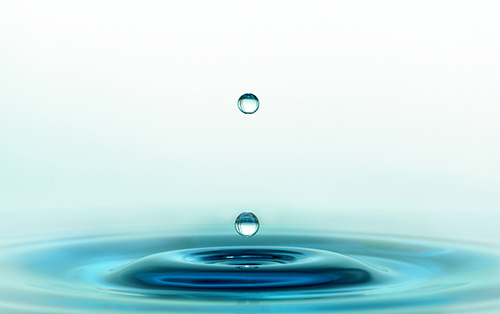What is Grander Water Technology?
“Water is a cosmic matter…”
Grander® Water Technology

It has been my own experience that Grander Water allows nutrients to be delivered to plants with increased ease. Water treated with Grander Technology assists in the restoration of balance and protection against negative influences in the environment. Water of this highest quality gives living systems extra support, so they can endure challenges and achieve their full potential.
Grander Water Technology has the ability to help living systems overcome stresses and challenges, and thrive, by providing high-grade energy and information from the natural world. Although water is but one piece of the puzzle, it is at the center of living processes and is connected to all the other pieces.
Grander Water Technology enhances life!
 Reflections on Water
Reflections on Water
By Hans Kronberger
Water is a cosmic matter,”Johann Grander said to me when I made my first TV interview with him. Driven by an old reporter’s reflex, I seized on this immediately and wanted to know in detail what he meant by this sentence. Today I consider this question to be the most nonsensical I have ever put to an interview partner. “Water is a cosmic matter!” There is no way to answer this question of the nature of water more clearly, unequivocally, and at the same time, more comprehensivly and precisely.
It took me quite a long time to understand that, with his statement, Grander had perfectly described the dimension of how to approach the element of water in order to get one step closer to it. Whoever takes notice of water only in its momentary state – in a water glass, in a river, a lake or in the ocean – or sees it as an ice block or a cloud, will only realize a fraction of the whole. It is essential to scrutinise water in its function within the entire cosmos, which means nothing less than to open one’s thoughts to infinity and reflect upon why water has strayed to planet Earth. How it has come into being and what is its function for the origin and preservation of life. From this point of view it is worthwhile to scrutinise the early mythologies and to investigate the history of water observation as a whole. In the first written reports we read of an infinite primeval water with no top or bottom, but a purely “endless depth”. Along with the reflections on good and evil, the separation of heaven and hell developed. Little by little the single ancient cultures visualised their imaginations in the form of gods. It is remarkable that this was also the time that bipolar thinking emerged, i.e. it distinguished between man and woman. The Babylonians speak of the mother creature Tiamat and of the father Apsu. According to the Babylonian belief, the uniting of salt water and fresh water led to the procreation of the first race of gods, whose descendants created heaven and earth from the cosmic ocean.
Indian mythology also talks of a primaeval water, from which the wonderful lotus burst into bloom. Out of the flower emerged Brahma, the creative god and great architect, who formed the universe in accordance with his memories of former worlds. When the work was completed, he went to sleep, not to awake for billions of years, when the worlds had vanished and there was a demand for the creation of new worlds.
The ancient Greeks made water the home of a superior, powerful god. According to Greek imagination, Poseidon, the ruler over oceans and rivers, lived in a water palace and crossed over the waves in a golden wagon pulled by white horses. Surges and sea spray obeyed his command. Later on they created hosts of goddesses and gods, naiads, dryads and other nymphs, who – in their fantasy – had human attributes, among them gracefully beautiful as well as ugly, fearsome and destructive characteristics. The rivers and springs where these gods were considered to live were therefore places of power.
The Greek philosopher and mathematician Thales of Miletus (625-545 B.C.) was the first to introduce the “logos”, i.e. reason, into the contemplation of water. He defines water as the “raw material” which is the “original source of all being”. From this time on, people tried to approach the phenomenon of water with “reason”: examples are both Empedocles (483-420 B.C.) and – in particular – Aristotle (384-322 B.C.), who for the first time divided the world into four fundamental elements. According to him, fire, earth, water and air are the basic components of the world. These four elements determined the thinking of the medieval alchemists, who – among other things – were searching for an elixir to change raw materials into gold. In the following centuries, the striving for refinement of natural materials was perverted to the point that any “considered benefit” had absolute priority over the preservation of nature.
The great natural scientist, physician and philosopher Theophrastus Bombastus von Hohenheim, known as Paracelsus (1493-1541 A.D.), combined the traditional knowledge of the ancient myths with the empirical methods of the emerging rational natural sciences.
In his opinion the four elements were animated by the appropriate elementary spirits: “Those in the water are nymphs, in the air sylphs, in the earth pygmaei, and those in the fire salamanderae.” This is how he described the forces (well acknowledged by himself), but however, not compatible with modern natural science.
The “sceptical chemist”(called so after his book The sceptical Chymnist), the Irishman Robert Boyle (1627-1691), broke with Aristotle’s theory of the elements after he realised that all the alchemist’s work had been based on this principle, and did not describe materials but rather properties.
Towards the end of the 18th century, Antoine Lavoisier (1743-1794) found out that the Aristotelian element of water was composed of hydrogen and oxygen. He created a new definition of water as an element which can in no way be decomposed into other materials. This view was maintained up to the middle of the 20th century. By reducing water to the chemical formula H2O, water observation was reduced to a purely mechanistic approach. This absolute edifice of natural science remained unshaken until the cluster formation of water was discovered and the first attempts were made to prove the information transmission in water.
And here the idea of the naturalist Johann Grander joins with one of the most important water scientists of the 20th century, namely Viktor Gutmann. To my question whether water had already been entirely researched, the sixfold doctor and candidate for the Nobel Prize in Chemistry answered: “Today scientists proceed from the assumption that water is abnormal because its highest density is at plus four degrees Celsius and not – as science wants to prescribe – at zero. It is not water that is abnormal, but our formulae, which are insufficient to describe the phenomenon of water.”
At this very moment I again remembered…
Johann Grander
 Water – Do we know all there is to know?
Water – Do we know all there is to know?
By Dipl.-Ing. Johannes Larch
The 21st century will finally put paid to the notion that water is no more than the chemical formula H2O. The past century was the century in which chemistry led the investigation of water, but it is this century that will give physics the chance to understand the secret of water.
Memory of Water
Does water have a memory? Can it store information and is it also able to reproduce this stored information and to pass it on? Can the memory of water be compared to the human memory in any way?
The human memory stores and deletes information in a more emotional way, depending on its importance or on the impression (in the truest sense of the word) the information made on the person in question.
The memory of water, in contrast, works in a more rational manner. It stores all the information it can obtain in an emotion-free and precise manner, good or bad, similar perhaps to a tape recorder which can record physical vibrations and can reproduce them as often as is wanted without the originally stored information being changed, reduced or lost.
The storage location and the exact procedure of the storage process in water are only just being understood by science and are only known in theory.
Empirical, that is systematic, checks of known effects go much further. For instance, we know today that the complex inner structure of the water has an effect on its properties. These different properties, for example, determine the length of time water remains fresh, the development conditions for micro-organisms in the water and, ultimately, how agreeable and compatible water is for all life forms (not least for humans) with which water enters into a symbiosis.
These important properties, which occur naturally in all water, are largely lost today, due to external influences.
The Structure
The structure of the water has an effect on all living organisms that need water. Its structure is part of what’s necessary for important control procedures in the organism, such as its ‘proper’ growth.
There are a number of influences on water. The sun, the moon and the whole universe, for example, are part of a natural vibration process with the earth and also communicate with the element of water.
Artificially induced vibrations, however, which are also picked up by water are more of a problem. The inner structure of water can be disturbed by technical emissions from different sources, including cell phone transmitters, radio transmitters, satellite transmissions, power transmission lines and many others.
The basic idea behind Grander Technology is to return the inner structure of water to an optimum state and to give it a permanent stability, and the soothing effect of this enhanced water, which is enjoyed by hundreds of thousands of users every day, speaks for itself.
The Structure of Water
The structure of water is still not taken into sufficient consideration in the official rating of drinking water. The quality of drinking water in Central Europe is basically fixed by the different drinking water regulations, which are intended to ensure that our main beverage does not contain any pathogenic bacteria or any heavy materials or chemical substances (above the official thresholds).
While this satisfies all the standards and regulations, the authorities still do not take into account the important fact that the structure of water represents an essential feature of quality, mainly due to the fact that at present it cannot be measured satisfactorily. It has always been known that certain sources of water seem to have healing qualities, that can lower fevers, promote the digestion, calm the skin, heal wounds or stop pain – but these effects are not yet calibrated or quantified to meet official standards.
The different composition of similar structures also plays a role in so-called solid elements. For example, diamond and graphite are both carbons, but they have different densities. The diamond is the hardest of all materials while graphite is soft.
The Properties
If we continue this idea with respect to the element of water, we find that water also has an inner structure. Admittedly, different structures do not change the hardness, or even the density, as with diamonds or graphite. In water it is, for instance, the freshness that is affected and above all the microbiological properties that are very dependent on the inner structure.
Two chemically identical waters can have different biological properties. This means that one can have a different effect on a living organism to the other, even though they both have exactly the same chemical make-up.
It is therefore not sufficient to rate water purely by its chemistry and microbiology. We have to find a way to evaluate its structure. This is difficult since reproducible measuring methods are only just becoming known, and since the memory storing capability of water is currently not recognised or dealt with in any recognised science text book.
However, there is a ray of hope, as the physics of water is becoming more and more the centre of worldwide interest. An expert committe of the WHO (World Health Organization) has been looking into the subject of water structure for some time. Efforts are also being made to at least have the term “water structure” included in the international WHO guidelines for drinking water.

 Reflections on Water
Reflections on Water Water – Do we know all there is to know?
Water – Do we know all there is to know? 